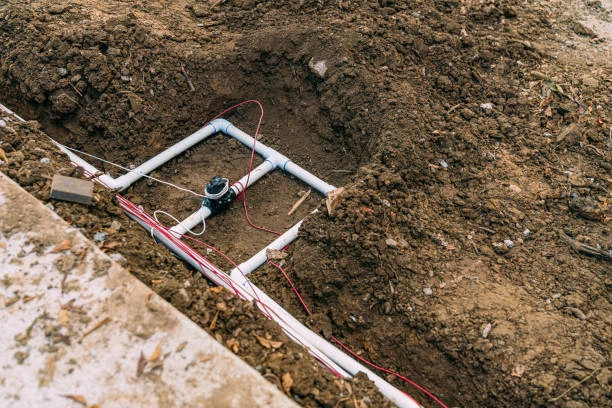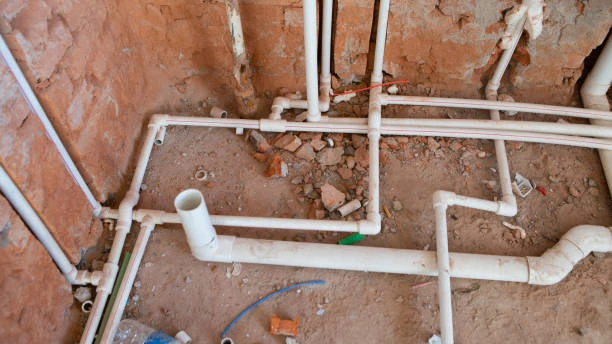The plastics pipe fitting and unlaminated profile shape industry is on the brink of transformation. With advancements in technology, sustainability initiatives, and increasing demand for efficient plumbing solutions, this sector is ripe with opportunities. Let’s dive deeper into the key highlights of this industry and explore future opportunities that lie ahead.
1. Overview of the Plastics Pipe Fitting Industry
The plastics pipe fitting industry has experienced significant growth in recent decades. This growth stems from the versatility of plastic materials. Plastics offer numerous advantages over traditional materials like metal. They are lightweight, making them easier to handle and install. Additionally, plastics resist corrosion, ensuring longer lifespan and durability. Their flexibility allows for better adaptability in various applications. Furthermore, plastic fittings are often more cost-effective than metal alternatives. This economic advantage appeals to many industries seeking efficient solutions. Overall, the shift toward plastics reflects changing industry needs and preferences.
1.1 What Are Plastics Pipe Fittings?
Plastic pipe fittings connect different sections of piping effectively. They are available in various shapes and sizes to meet diverse needs. Common shapes include elbows, tees, and connectors for versatility. These fittings are made from durable materials like PVC, CPVC, and polyethylene. Each material offers unique properties for specific applications. Designed to withstand high pressure, they ensure reliable performance. Additionally, their corrosion resistance enhances their longevity in challenging environments. This makes them ideal for industries like construction, agriculture, and energy. Overall, plastic fittings play a crucial role in modern piping systems.
2. Key Highlights of the Industry
2.1 Growth Drivers
- Rising Demand for Sustainable Solutions: As environmental concerns grow, the demand for sustainable materials has surged. Plastics are often lighter and require less energy to produce than metals.
- Infrastructure Development: Global urbanization and infrastructure projects drive the need for reliable plumbing and piping solutions.
2.2 Technological Innovations
New technologies in manufacturing processes, such as 3D printing, are transforming the production of plastic pipe fittings. This innovative approach enables greater customization for specific applications. Manufacturers can create unique designs tailored to customer needs. Additionally, 3D printing significantly reduces waste during production. This efficiency not only lowers costs but also supports sustainability efforts. By minimizing material usage, companies can enhance their environmental responsibility. Overall, these advancements are shaping the future of the plastic fittings industry. The integration of technology ensures improved quality and performance in products.
3. Unlaminated Profile Shape: A Niche Market
3.1 What Is Unlaminated Profile Shape?
Unlaminated profiles are shapes created from plastics without added layers or coatings. This process ensures the material retains its natural properties effectively. As a result, they are suitable for a wide range of applications. Their inherent characteristics provide durability and versatility in use. These profiles are often lighter than laminated alternatives, making them easier to handle. They also maintain excellent flexibility, which is beneficial in many industries. Furthermore, unlaminated profiles are often more cost-effective to produce. Overall, their straightforward design enhances performance across different applications.
3.2 Applications of Unlaminated Profiles
These profiles find applications in construction, automotive, and even electronics. Their adaptability and durability make them a preferred choice for many industries.
4. Future Opportunities in the Industry
4.1 Sustainable Practices
The future of the industry lies firmly in sustainability. Companies that prioritize recycling will significantly improve their market position. Using bio-based plastics will also provide a competitive edge. The development of eco-friendly materials is increasingly crucial for success. These materials will attract environmentally conscious consumers and businesses. Compliance with rising regulations will become essential for all manufacturers. Sustainable practices enhance brand reputation and customer loyalty. Overall, embracing eco-friendly approaches supports long-term growth and profitability. This shift towards sustainability reflects changing consumer preferences and industry standards.
4.2 Expanding Market Reach
Emerging markets in Asia and Africa present significant opportunities. As these regions continue to develop, the demand for efficient plumbing solutions will rise.
4.3 Innovations in Design and Manufacturing
Investing in R&D for innovative designs can lead to better-performing products. For instance, improving the resistance of fittings to chemicals and temperature changes can open up new applications.
5. Challenges Facing the Industry
5.1 Regulatory Hurdles
Navigating regulations around plastic use and recycling can be quite challenging for companies. Staying informed about local standards is essential for compliance. Additionally, companies must keep track of international regulations as well. Non-compliance can lead to significant legal and financial penalties. Understanding these regulations is crucial for maintaining operational integrity. Regular training and updates for staff can help ensure awareness. Engaging with industry associations may also provide valuable insights. Overall, proactive approaches to regulation can mitigate risks effectively. This focus will foster a more responsible business environment.
5.2 Competition from Alternative Materials
While plastics are popular, there’s increasing competition from materials like composites and metals that offer unique benefits. Understanding market trends is crucial for staying ahead.

6. Conclusion
The plastics pipe fitting and unlaminated profile shape industry is poised for significant growth. With the right focus on sustainability, innovation, and market expansion, businesses can seize the numerous opportunities that lie ahead. As we move forward, staying adaptable and forward-thinking will be key to thriving in this dynamic landscape.
FAQs
1. What are the primary materials used for plastics pipe fittings?
Common materials include PVC, CPVC, and polyethylene, which are valued for their durability and corrosion resistance.
2. How do unlaminated profiles differ from laminated ones?
Unlaminated profiles do not have additional layers or coatings, allowing them to maintain their inherent properties.
3. Why is sustainability important in the plastics industry?
Sustainability reduces environmental impact and aligns with consumer preferences for eco-friendly products.
4. What are some applications of plastics pipe fittings?
They widely serve plumbing, irrigation, and industrial applications due to their versatility and durability.
5. How can companies innovate in the plastics pipe fitting market?
Investing in R&D for new materials, designs, and manufacturing processes can lead to improved product performance and market differentiation.


















